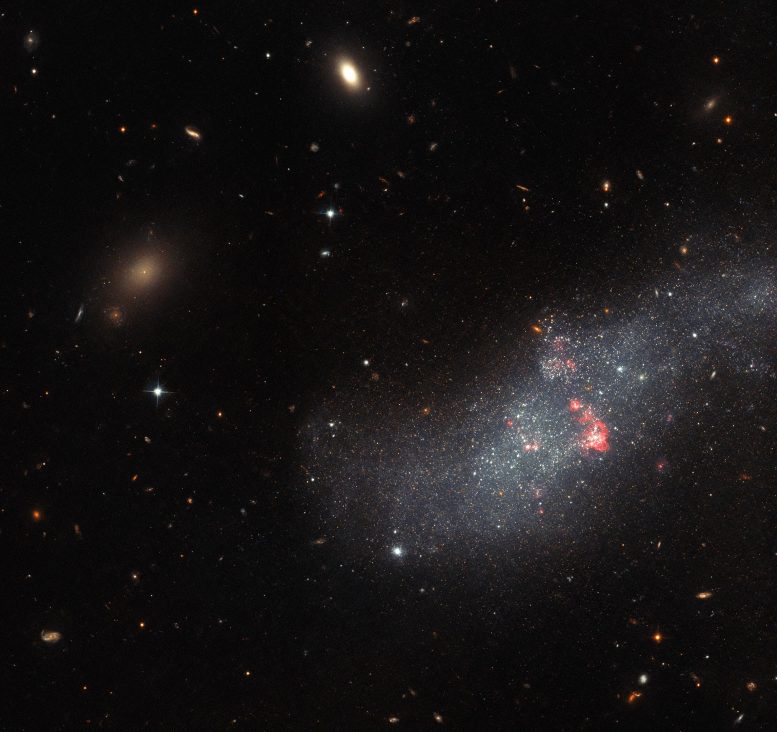
In this Hubble Space Telescope, UGCA 307 hangs against an irregular backdrop of distant galaxies. Located in the constellation Corvus, approximately 26 million light-years away from Earth, the small galaxy is composed of a sparse grouping of stars interspersed with red gas bubbles that indicate areas of recent star formation. Credit: ESA/Hubble & NASA, R. Tully
UGCA 307 is a small irregular galaxy located approximately 26 million light-years away from Earth in the constellation Corvus. It is part of the Local Group of galaxies that includes our Milky Way, and it is notable for its diffuse band of stars and red bubbles of gas that signify recent star formation. UGCA 307 is also sometimes referred to as the “Wolf-Lundmark-Melotte” galaxy, named after Knut Lundmark and Philibert Jacques Melotte, the astronomers who first discovered it.
UGCA 307 hangs against an irregular backdrop of distant galaxies in this image from the Hubble Space Telescope. The small galaxy consists of a diffuse band of stars containing red bubbles of gas that mark regions of recent star formation, and lies roughly 26 million light-years from Earth in the constellation Corvus. Appearing as just a small patch of stars, UGCA 307 is a diminutive dwarf galaxy without a defined structure — resembling nothing more than a hazy patch of passing cloud.
This image is part of a NASA/ESA Hubble project to explore every known nearby galaxy, giving astronomers insights into our galactic neighborhood. Before this set of observations, almost three quarters of nearby galaxies had been investigated by Hubble in enough detail to spot the brightest stars and build up an understanding of the stars populating each galaxy. This Hubble project set out to explore the remaining quarter of nearby galaxies by taking advantage of short gaps in Hubble’s observing schedule.
This crystal-clear image was captured by Hubble’s Advanced Camera for Surveys (ACS), which was installed on the telescope in 2002 during Servicing Mission 3B. Hubble’s vantage point in low Earth orbit means that it is above atmospheric turbulence, giving it a sharper view of the Universe. However, it is also close enough to Earth that astronauts could visit the telescope to repair and refurbish the telescope. In total, five Space Shuttle missions flew to Hubble and kept it at the forefront of astronomy by installing new instruments. The ACS replaced one of Hubble’s original instruments, the Faint Object Camera, which was built by ESA.


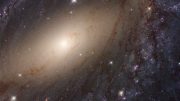


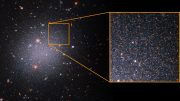
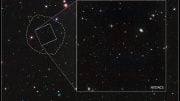
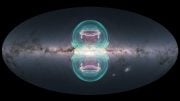

Be the first to comment on "Hubble’s Neighborhood Watch: Exploring Every Known Nearby Galaxy"